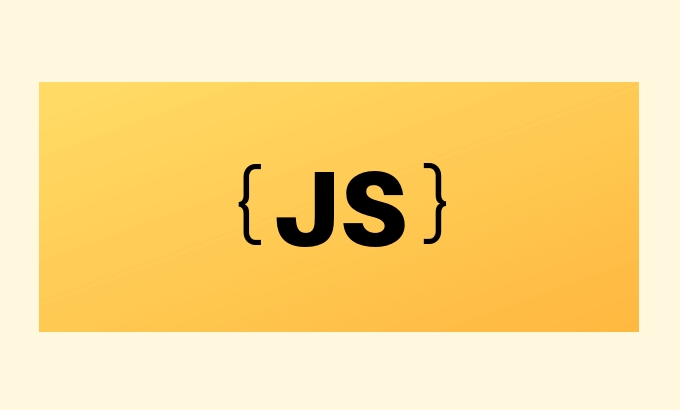Dynamic JavaScript JIT Compilers and Java Virtual Machine Parallels
Jul 18, 2025 am 02:59 AMThe JavaScript JIT compiler and JVM have similar mechanisms in runtime optimization, but the implementation methods vary due to different language characteristics. 1. Both adopt hotspot code recognition strategies. JIT dynamically compiles frequently executed code, and JVM's HotSpot triggers compilation based on the number of method calls; 2. JavaScript uses type inference and relies on runtime feedback for optimization and adjustment, while Java implements earlier and more radical optimization based on static type and bytecode verification; 3. The JavaScript engine is limited by the browser environment and is more limited in resource use than JVM, and JVM has more mature garbage collection, multi-threading support and complex optimization capabilities. Understanding these similarities and differences can help improve front-end and back-end code performance.

The JavaScript JIT compiler and Java Virtual Machine (JVM) have many similarities in runtime optimization. Although they serve different language ecology, there are many analogies for the underlying mechanism. If you have a certain understanding of these two systems, you may find that their ideas on performance optimization are actually very similar.

Dynamic Compilation: The Core of Instant Optimization
The JIT (Just-In-Time) compiler in the JavaScript engine will dynamically convert JavaScript code into machine code during the code running, rather than compile it all from the beginning. This is somewhat similar to how JVM works - the JVM initially uses interpreted to execute bytecode, then recognizes "hot-spot code" based on the operation, and then hands it over to the JIT compiler for optimization.
For example, if you write a frequently called function, the JavaScript engine will notice that it is executed multiple times, and compile it into more efficient local code. The same is true for JVM. HotSpot virtual machine tracks the number of calls and loop body of the method, and once it reaches a certain threshold, it triggers compilation.

- Collecting information at runtime is key
- Hot spot identification strategies affect performance
- Compilation time requires balancing startup speed and long-term performance
Type Speculation vs Bytecode Verification
JavaScript is a dynamically typed language, which means that the type of variables can change at runtime. JIT compilers usually use "type speculation" to optimize code. For example, if a function receives numeric parameters for the first time, the engine will assume that they will be numeric in the future and generate optimized code based on this. If a string is passed in later, the engine has to "de-optimize" and fall back to interpretation mode.
In contrast, Java is statically typed, and the JVM has completed type checking when loading the class. Bytecode verification ensures type safety, allowing the JVM to optimize code earlier and more radically.

This difference causes JavaScript's JIT to rely more on runtime feedback, while JVMs tend to be more static structural analysis.
Isolation and optimization space of execution environment
The JavaScript engine is usually embedded in the browser, each page has its own execution context, and resource isolation is relatively strict. This also means that the JIT compiler is subject to certain restrictions on memory usage and thread scheduling.
JVM runs in a more relaxed environment, usually used for server-side applications, with more resources available. The JVM's garbage collection mechanism, multi-threading support and class loading mechanism are all more mature, allowing for more complex optimization strategies.
Although the two have different goals, they are pursuing higher execution efficiency and lower latency under modern architectures.
Basically that's it. Understanding the similarities and differences between JIT and JVM will help better write high-performance code, whether it is front-end or back-end development.
The above is the detailed content of Dynamic JavaScript JIT Compilers and Java Virtual Machine Parallels. For more information, please follow other related articles on the PHP Chinese website!

Hot AI Tools

Undress AI Tool
Undress images for free

Undresser.AI Undress
AI-powered app for creating realistic nude photos

AI Clothes Remover
Online AI tool for removing clothes from photos.

Clothoff.io
AI clothes remover

Video Face Swap
Swap faces in any video effortlessly with our completely free AI face swap tool!

Hot Article

Hot Tools

Notepad++7.3.1
Easy-to-use and free code editor

SublimeText3 Chinese version
Chinese version, very easy to use

Zend Studio 13.0.1
Powerful PHP integrated development environment

Dreamweaver CS6
Visual web development tools

SublimeText3 Mac version
God-level code editing software (SublimeText3)
 JVM memory management key points and precautions
Feb 20, 2024 am 10:26 AM
JVM memory management key points and precautions
Feb 20, 2024 am 10:26 AM
Key points and precautions for mastering JVM memory usage JVM (JavaVirtualMachine) is the environment in which Java applications run, and the most important one is the memory management of the JVM. Properly managing JVM memory can not only improve application performance, but also avoid problems such as memory leaks and memory overflows. This article will introduce the key points and considerations of JVM memory usage and provide some specific code examples. JVM memory partitions JVM memory is mainly divided into the following areas: Heap (He
 A distributed JVM monitoring tool, very practical!
Aug 15, 2023 pm 05:15 PM
A distributed JVM monitoring tool, very practical!
Aug 15, 2023 pm 05:15 PM
This project is designed to facilitate developers to monitor multiple remote host JVMs faster. If your project is Spring boot, it is very easy to integrate. Just introduce the jar package. If it is not Spring boot, don’t be discouraged. You can quickly initialize a Spring boot program and introduce it yourself. Jar package is enough
 Detailed explanation of JVM command line parameters: the secret weapon to control JVM operation
May 09, 2024 pm 01:33 PM
Detailed explanation of JVM command line parameters: the secret weapon to control JVM operation
May 09, 2024 pm 01:33 PM
JVM command line parameters allow you to adjust JVM behavior at a fine-grained level. The common parameters include: Set the Java heap size (-Xms, -Xmx) Set the new generation size (-Xmn) Enable the parallel garbage collector (-XX:+UseParallelGC) Reduce the memory usage of the Survivor area (-XX:-ReduceSurvivorSetInMemory) Eliminate redundancy Eliminate garbage collection (-XX:-EliminateRedundantGCs) Print garbage collection information (-XX:+PrintGC) Use the G1 garbage collector (-XX:-UseG1GC) Set the maximum garbage collection pause time (-XX:MaxGCPau
 Java Error: JVM memory overflow error, how to deal with and avoid
Jun 24, 2023 pm 02:19 PM
Java Error: JVM memory overflow error, how to deal with and avoid
Jun 24, 2023 pm 02:19 PM
Java is a popular programming language. During the development of Java applications, you may encounter JVM memory overflow errors. This error usually causes the application to crash, affecting the user experience. This article will explore the causes of JVM memory overflow errors and how to deal with and avoid such errors. What is JVM memory overflow error? The Java Virtual Machine (JVM) is the running environment for Java applications. In the JVM, memory is divided into multiple areas, including heap, method area, stack, etc. The heap is used to store created objects
 Demystifying the working principle of JVM: In-depth exploration of the principles of Java virtual machine
Feb 18, 2024 pm 12:28 PM
Demystifying the working principle of JVM: In-depth exploration of the principles of Java virtual machine
Feb 18, 2024 pm 12:28 PM
Detailed explanation of JVM principles: In-depth exploration of the working principle of the Java virtual machine requires specific code examples 1. Introduction With the rapid development and widespread application of the Java programming language, the Java Virtual Machine (JavaVirtualMachine, referred to as JVM) has also become indispensable in software development. a part of. As the running environment for Java programs, JVM can provide cross-platform features, allowing Java programs to run on different operating systems. In this article, we will delve into how the JVM works
 Analysis of the functions and principles of JVM virtual machine
Feb 22, 2024 pm 01:54 PM
Analysis of the functions and principles of JVM virtual machine
Feb 22, 2024 pm 01:54 PM
An introduction to the analysis of the functions and principles of the JVM virtual machine: The JVM (JavaVirtualMachine) virtual machine is one of the core components of the Java programming language, and it is one of the biggest selling points of Java. The role of the JVM is to compile Java source code into bytecodes and be responsible for executing these bytecodes. This article will introduce the role of JVM and how it works, and provide some code examples to help readers understand better. Function: The main function of JVM is to solve the problem of portability of Java programs on different platforms.
 Java program to check if JVM is 32-bit or 64-bit
Sep 05, 2023 pm 06:37 PM
Java program to check if JVM is 32-bit or 64-bit
Sep 05, 2023 pm 06:37 PM
Before writing a java program to check whether the JVM is 32-bit or 64-bit, let us first discuss about the JVM. JVM is a java virtual machine, responsible for executing bytecode. It is part of the Java Runtime Environment (JRE). We all know that java is platform independent, but JVM is platform dependent. We need separate JVM for each operating system. If we have the bytecode of any java source code, we can easily run it on any platform due to JVM. The entire process of java file execution is as follows - First, we save the java source code with .java extension and the compiler converts it into bytecode with .class extension. This happens at compile time. Now, at runtime, J
 What is the garbage collection mechanism of jvm?
Feb 01, 2023 pm 02:02 PM
What is the garbage collection mechanism of jvm?
Feb 01, 2023 pm 02:02 PM
The garbage collection mechanism of jvm is GC (Garbage Collection), also called garbage collector. Basic principles of GC: Recycle objects that are no longer used in memory; the method used for recycling in GC is called the collector. Since GC needs to consume some resources and time, Java analyzes the life cycle characteristics of the object and follows the Objects are collected in the new generation and old generation to shorten the pause caused by GC to the application as much as possible.






